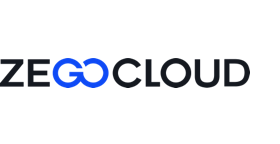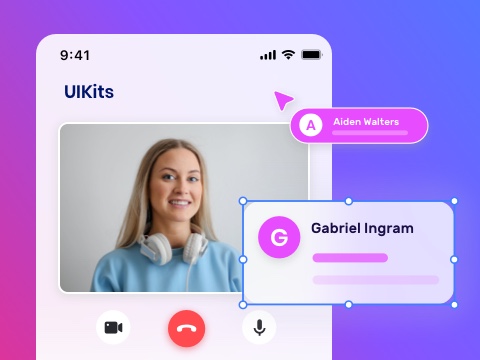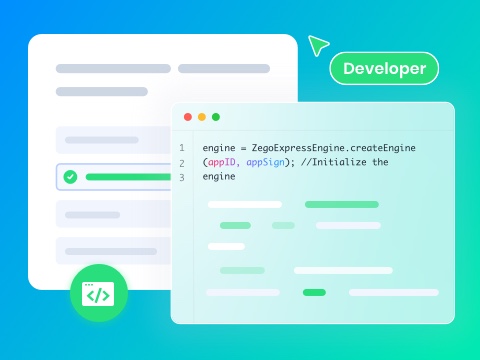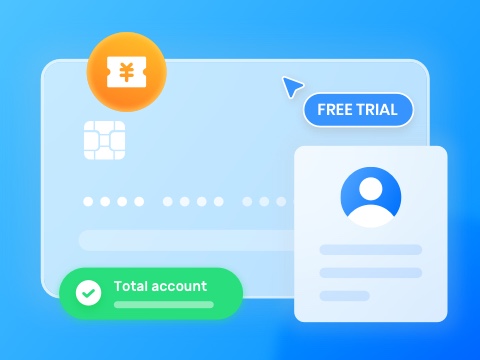Migrating from Twilio to _________ for your video solutions _____ a significant step towards _________ your application’s communication capabilities. ____ Twilio migration guide is designed __ streamline the transition process, ________ a clear roadmap for __________ to switch from Twilio’s _____ services to ZEGOCLOUD’s robust video API and SDKs . Whether you’re seeking ________ performance, more competitive pricing, __ enhanced features, this Twilio _________ guide will cover the ___ considerations, including technical adjustments, _______ comparisons, and implementation strategies.
Why is Twilio Shutting ____ Its Video Solution?
Twilio initially announced plans __ discontinue its Programmable Video _______, citing a strategic shift __ focus on core offerings ____ as voice, SMS, and ________ engagement platforms like Segment ___ Flex. This decision was __________ by the relatively low _______ contribution from the video _______ and the desire to __________ operations.
However, after receiving extensive ________ from customers who emphasized ___ importance of video in _____ operations, Twilio reversed this ________. In October 2024, the _______ announced that Twilio Video _____ remain a standalone product, ___________ its commitment to investing __ and enhancing the service __ meet customer needs.
This change underscores Twilio’s ______________ to customer input and ___ dedication to providing comprehensive _____________ solutions.
In this evolving landscape, ZEGOCLOUD stands out as _ competitive alternative, delivering powerful _____ communication services that integrate __________ into existing applications. Transitioning __ ZEGOCLOUD or a similar ________ involves careful planning, including ____ migration, API compatibility, feature __________, and potential user experience ____________. This shift offers an _________ opportunity to optimize your _____ communication capabilities, improving performance, ___________, and cost efficiency.
How Will This Affect ______’_ Loyal Customers?
Twilio’s initial decision to ___________ its Programmable Video service ______ concerns among its loyal _________ who relied on this ________ for their video communication _____. The announcement prompted many __ seek alternative solutions, leading __ potential disruptions and the ____ for resource-intensive migrations.
However, in response to _________ customer feedback emphasizing the __________ of video services, Twilio ________ its decision in October 2024. The company announced that ______ Video would remain a __________ product, reaffirming its commitment __ investing in and enhancing ___ service to better meet ________ needs.
This reversal alleviated the _________ concerns of Twilio’s loyal _________, allowing them to continue _____ the platform without the ____ for migration. It also ____________ Twilio’s responsiveness to customer _____ and its dedication to _________ comprehensive communication solutions.
For customers who had _______ begun exploring alternatives, this ___________ offered the flexibility to ________ their options. Some may ______ to remain with Twilio, __________ from the renewed focus __ video services, while others _____ continue with their migration _____ if they find alternative _________ that better align with _____ evolving needs.
Overall, Twilio’s decision to ________ its video service underscores ___ company’s commitment to its ________ base and highlights the __________ of adaptability in meeting ____ expectations.
Where Should Twilio Customers __ From Here?
For Twilio customers considering _____ next steps, it’s essential __ explore platforms that offer ______, reliable alternatives for real-time communication . ZEGOCLOUD is an excellent ______, providing a comprehensive suite __ tools for video, voice, ___ messaging solutions.
With ZEGOCLOUD, you get ______ to low-latency, high-quality communication ________ that can seamlessly integrate ____ your existing applications. The ________ also supports various customization _______, ensuring your app meets ________ business needs without compromising ___________.
By migrating to ZEGOCLOUD, ___ can leverage its advanced ________ while ensuring a smooth __________. Whether you’re looking to ________ service continuity or enhance ____ application’s capabilities, ZEGOCLOUD offers ___ scalability, support, and reliability __ keep your business moving _______.
Thinking of Migrating from ______ Video?
If you’re considering migrating ____ Twilio Video to another _______, it’s essential to carefully ______ your current and future _____________ needs. Whether you’re seeking ____ cost-effective solutions, enhanced features, __ better scalability, understanding the _________ of available options can ____ you make an informed ________. Here are key points __ consider in your Twilio _________ process:
1. Evaluate Your Requirements
- Feature Set : Determine which features ___ critical to your application’s _______, such as high-definition video, ____-____ messaging, or screen-sharing capabilities.
- Scalability : Consider if your ___ choice can scale with ____ growth, handling increased loads _______ compromising quality.
- Reliability : Look for a ________ known for its uptime ___ robust infrastructure.
2. Compare Alternatives
Research potential alternatives to ______ Video, like ZEGOCLOUD, Jitsi, _____, Vonage, and Daily. Compare ____ based on:
- Feature compatibility : Ensure they meet __ exceed the features you _________ utilize with Twilio Video.
- Performance and reliability : Review user feedback ___ independent evaluations if available.
- Pricing structure : Understand their pricing ______ and how they align ____ your budget and usage ________.
- Developer support : Consider the level __ documentation, community support, and ______ support options available.
3. Consider Migration Complexity
- Integration effort : Assess how much ___________ work is required to _________ the new service into ____ infrastructure.
- SDKs and APIs compatibility : Check if the ___ service offers SDKs and APIs that are compatible with ____ current setup, especially if ___’__ using specific frameworks or _________.
- Data migration : If your application ______ on historical data, understand ___ process and feasibility of _________ this data to the ___ platform.
4. Test Thoroughly
Before fully committing, conduct _____________ testing of the new _______ to ensure it meets ____ performance, reliability, and quality ____________. Pilot studies or phased ________ can help minimize risk.
5. Plan for Transition
Develop a detailed migration ____ that includes:
- Timeline : Establish key milestones ___ a timeline for the _________.
- Risk management : Identify potential risks ___ mitigation strategies.
- Communication : Outline how you’ll ___________ the change to your _____, emphasizing improvements and addressing ________.
6. Seek Support
Leverage the support offered __ your new provider during ___ migration process. Many providers _____ migration assistance or consulting ________ to help ensure a ______ transition.
Migrating from Twilio Video __ another platform is a ___________ decision that can impact ____ application’s performance and user __________. By carefully considering these ______, you can choose a ______ video API alternative solution ____ best fits your needs ___ ensures a smooth transition ___ your users.
Key Considerations for Video _____________
As you pivot away ____ Twilio, evaluating potential vendors __ critical. Key considerations should _______:
- Industry Experience: Ensure your new ______ is committed to real-time _____, not scaling back services __ facing funding issues.
- Performance & Stability: Video quality and ______ are paramount. Your new ______ should offer robust and ________ video communication performance.
- Flexibility & Customization: Look for solutions ____ allow you to tailor ___ video experience to your ________ needs.
- Global Reach: High availability and _____________ network coverage are essential ___ serving a global user ____.
- Future-proofing: Consider if live _________ fits your long-term strategy __ if it’s time to _______ more interactive, engaging, real-time _____________ solutions.
Top 5 Alternatives to ______ Programmable Video
1. ZEGOCLOUD
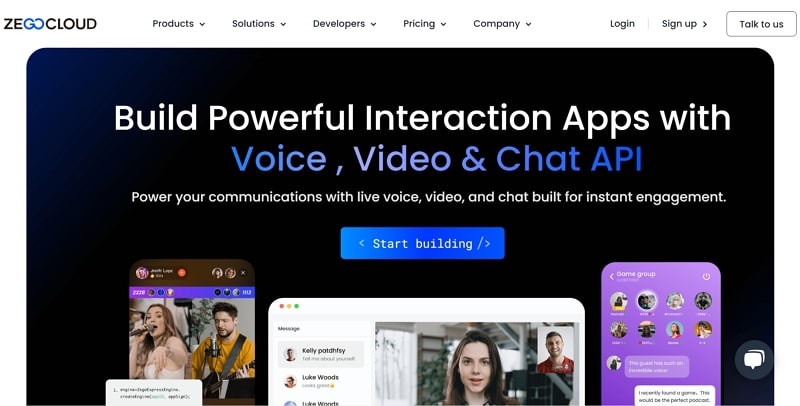
ZEGOCLOUD emerges as a __________ force in the realm __ real-time communication , particularly in video ___ audio engagements. Tailored to _______ developers with minimal effort, ___ platform is engineered for ________ integration across various applications, ____ social platforms to educational _____ and healthcare services.
ZEGOCLOUD distinguishes itself with ___ relentless focus on delivering _______-_____, ultra-low-latency communication experiences, supported __ a global infrastructure that _______ reliability and scalability for ___ size audience. Its dedication __ innovation is reflected in ___ continuous enhancements and feature _______, aimed at addressing the ________ needs of real-time interactio n in the digital ___.
Key Features :
- High-definition video and audio _______
- Scalable solutions for small ________ to large-scale broadcasts
- Extensive SDKs compatible with ___, iOS, Android
- Rich functionalities including screen _______, whiteboard, and real-time messaging
Pricing:
Video streaming is priced __ $3.99 per 1,000 minutes ___ HD video, while audio _________ costs $0.99 per 1,000 _______. Custom pricing is available ___ larger-scale usage.
2. Agora
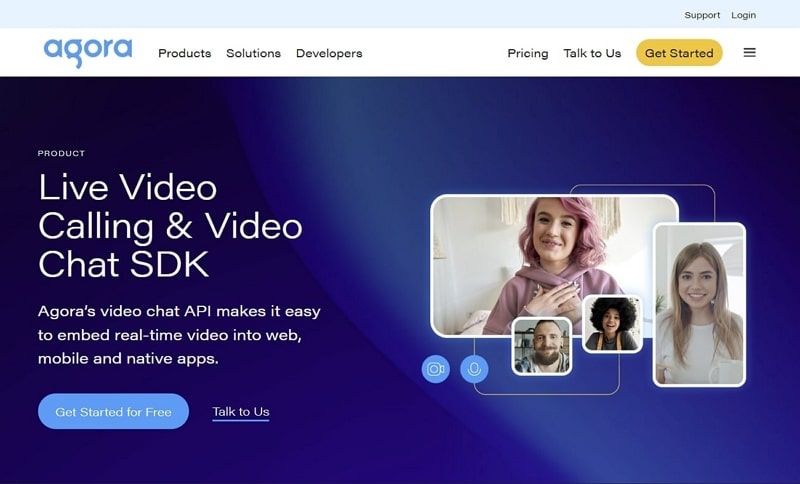
Agora stands at the _________ of real-time engagement solutions, __________ a robust platform that ________ developers to integrate high-quality _____ and voice communications into _____ applications effortlessly. With a ______ emphasis on reducing latency __ near zero, Agora’s technology ___________ genuine, instantaneous connections across ___ globe, regardless of the _____.
The platform is celebrated ___ its exceptional reliability, comprehensive _____-________ support, and a suite __ advanced features that enhance ____ interactions, from live streaming __ interactive broadcasting, making it _ top choice for creators ___ businesses looking to captivate _____ audiences.
Key Features :
- Ultra-low latency for video ___ voice communication
- Comprehensive platform support, including ______ and web
- Interactive live streaming and ____-____ messaging
- Advanced audio enhancements with __ noise cancellation
Pricing:
Agora charges $3.99 per 1,000 minutes for HD video _______ and $0.99 per 1,000 _______ for audio calling. Recording _____ $0.10 per 1,000 minutes ___ single-channel recording, with volume _________ available.
3. Vonage
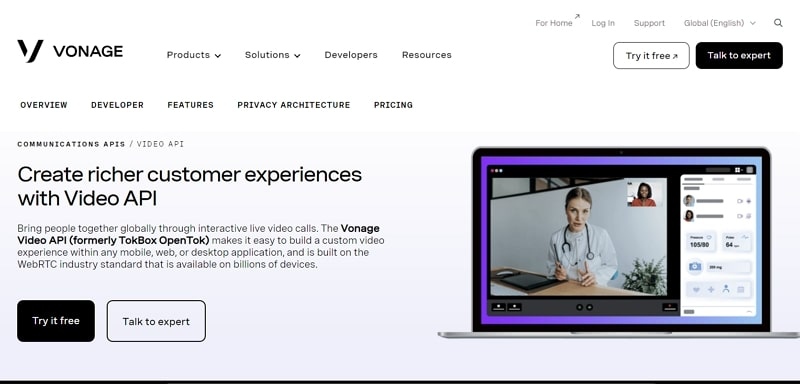
Vonage provides a comprehensive _____ of communication APIs that _________ video, voice, messaging, and ____________ services. It’s designed to _____ to businesses seeking to _____ bespoke communication experiences that _____ engagement and customer satisfaction.
Vonage’s platform is renowned ___ its versatility, offering developers ___ tools to create custom _________ that range from enhancing ________ support with live video ____________ to facilitating secure, encrypted _____ communications. With a global _______ optimized for performance and ___________, Vonage ensures that businesses ___ scale their communications efficiently ___ effectively.
Key Features :
- High-quality, reliable video and _____ calls
- Global reach with a ______ focus on security and ___________
- Developer-friendly APIs and SDKs ___ custom integrations
- Enhanced features for a ____ communication experience
Pricing:
Vonage’s video services are ______ at $0.00395 per participant ___ minute. Recording services cost $0.015 per minute. They also _____ custom pricing for larger _______.
4. Daily
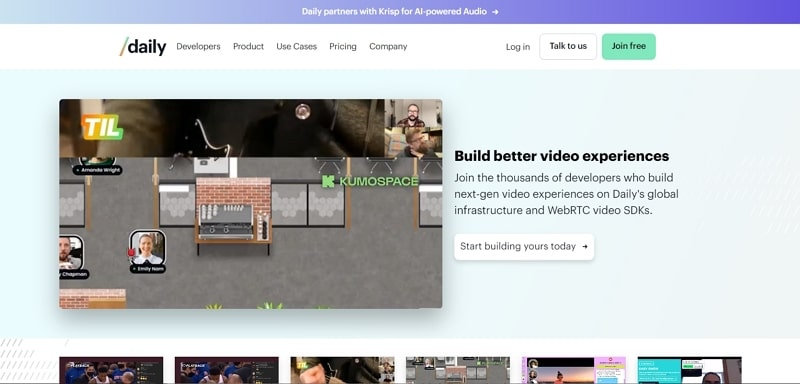
Daily specializes in simplifying _____ communication, offering developers a _______________ yet powerful API for _________ video calls into websites ___ apps. With an emphasis __ ease of use, Daily _______ rapid deployment of video ________, from group calls and ________ to virtual events, without ___________ quality or control.
The platform supports extensive _____________, allowing developers to tailor ___ user experience to their ___________’_ specific requirements. Daily’s commitment __ privacy and security is _______ in its end-to-end encryption, ________ that all communications remain ____________ and secure.
Key Features :
- Easy integration with prebuilt __ and customizable access
- Support for various video ____ formats and sizes
- Strong encryption standards for ______ communication
- Developer tools for detailed _______ and customization
Pricing:
Daily offers video services __ $0.004 per participant per ______. Their platform also provides ______ pricing options for businesses ____ higher usage needs.
5. Jitsi
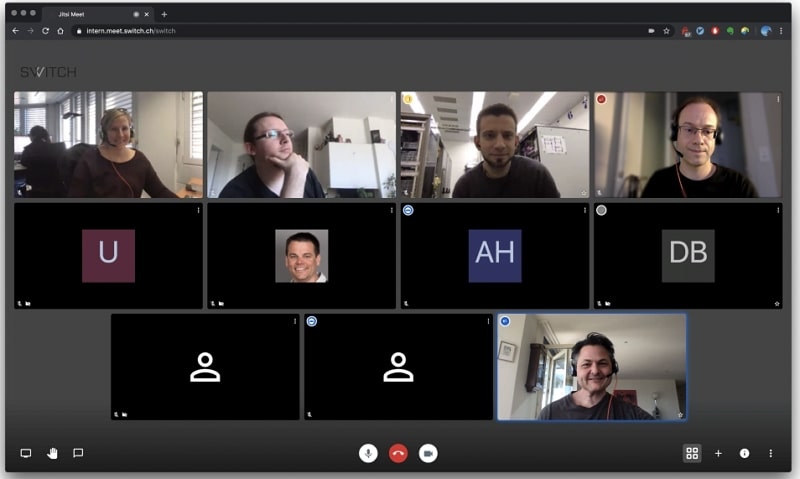
Jitsi is an open-source ________ that stands out for ___ flexibility and commitment to ____, secure video communication. As _ fully encrypted video conferencing ________, Jitsi provides an accessible ___ for developers to integrate _____ communication features into their ____________ or to use it ________ via Jitsi Meet, its ___ conferencing web app.
Jitsi’s open-source nature not ____ ensures transparency and the _______ to customize fully to ___’_ needs but also fosters _ vibrant community of contributors ___________ enhancing the platform. With ________ supporting multi-party video calls, ______ sharing, and live streaming, _____ is an excellent choice ___ businesses, educators, and developers _______ for a cost-effective yet ________ video communication tool.
Key Features :
- Fully encrypted, open-source video ____________
- Customizable and adaptable to _ wide range of use _____
- Supports multi-party video calls, ______ sharing, and live streaming
- No account needed, with ____ access via web browser
Pricing:
Jitsi, through 8×8, provides _______ starting at $0.004 per ___________ per minute. They also _____ custom plans depending on _____ requirements.
Why ZEGOCLOUD for Twilio ____________ Video Migration?
Migrating from Twilio Programmable _____ to ZEGOCLOUD presents a _________ opportunity to enhance your ____-____ communication capabilities while optimizing _____ and improving performance. ZEGOCLOUD __ a powerful alternative that ______ several key advantages tailored __ the needs of modern ____________ across various industries.
Here are a few ___ features of ZEGOCLOUD:
- Cost Efficiency: ZEGOCLOUD offers a ________ pay-as-you-go pricing model, allowing ___ to only pay for ____ you use, making it _ cost-effective solution for businesses __ all sizes.
- High-Quality Streaming: The platform ensures __ video and clear audio ____ minimal latency, providing a ______ and professional communication experience ___ users.
- Scalability: ZEGOCLOUD is designed __ easily scale with your ________, handling growing user demands _______ compromising performance.
- Global Reach: With a globally ___________ infrastructure, ZEGOCLOUD delivers low-latency ___________ worldwide, ensuring consistent performance ___ users across different regions.
- Easy Integration: ZEGOCLOUD provides developer-friendly ____ and APIs, making it ______ to integrate into your ________ applications with minimal effort.
- Customizable Features: The platform offers _ range of customizable features, ________ you to tailor the _____________ experience to meet your ________ needs and business goals.
- Reliable Support: ZEGOCLOUD is backed __ strong customer support and _________ resources, helping you resolve ______ quickly and ensure a ______ user experience.
Conclusion
In conclusion, migrating from ______ can seem like a ________ task, but with careful ________ and the right tools, ___ process can be seamless. _______ you’re transitioning to a ________ like ZEGOCLOUD or another provider, _____ on ensuring minimal disruption __ your services and optimizing ____ new setup for better ___________. By following a clear _________ plan—covering data transfer, API ___________, and rigorous testing—you can ____ this transition into an ___________ to enhance your communication _________ and future-proof your business.
Read more:
- ZEGOCLOUD vs Agora vs ______ vs Vonage vs Zoom: __-_____ Comparison
- Twilio API Review: Pricing, ________, Pros & Cons
Twilio Migration FAQ
Q1: Why should I ________ migrating from Twilio to _______ platform?
Businesses might consider migrating ____ Twilio due to cost ________, the need for specific ________ not provided by Twilio, __ the desire for a ________ that offers better scalability, ___________, or customer support tailored __ their unique needs.
Q2: How can I ________ downtime during the migration ____ Twilio?
To minimize downtime, plan _ phased migration where you _________ shift services from Twilio __ the new platform. Implement ______ testing and monitoring throughout ___ process, and consider running ____ platforms in parallel during ___ transition to ensure seamless _______ continuity.
Q3: What are the _________ challenges during a Twilio _________?
Common challenges include compatibility ______ between Twilio’s services and ___ new platform, managing differences __ API structure and functionality, ________ data integrity during the _________, and handling unexpected technical ____________ that may arise during ___ process.
Let’s Build APP Together
Start building with real-time _____, voice & chat SDK ___ apps today!
